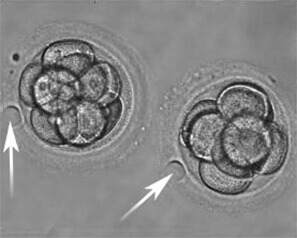Elective Single Embryo Transfer
It has long been standard practice in the field of in vitro fertilization (IVF) to transfer multiple embryos to improve the chances that at least one viable pregnancy will result. However, the process of multiple transfers presents increased serious risks and complications to both mothers and infants when twin, triplet and higher-order pregnancies occur. These complications range from preeclampsia and gestational diabetes to higher rates of C-section and psychological issues for the moms, and to prematurity, birth complications, long-term learning disabilities and developmental problems in their offspring. In one study conducted by the Centers for Disease Control (CDC), half of the infants from multiple pregnancies had adverse outcomes.
Single Embryo Transfer
What is elective single embryo transfer (eSET)?
Elective single-embryo transfer (eSET) is a procedure in which one embryo, selected from a larger number of available embryos, is placed in the uterus or fallopian tube. The embryo selected for eSET might be from a previous IVF cycle (e.g., cryopreserved embryos (frozen)) or from the current fresh IVF cycle that yielded more than one embryo. The remaining embryos may be set aside for future use or cryopreservation.
eSET helps women avoid several risks to their own health that are associated with carrying multiples. It also helps families achieve success while preventing some risks known to be associated with giving birth to twins or what is called “high order multiple births” (three or more children born at the same time). Infants born in multiple births are more often born early (preterm), are smaller (low birth weight) and experience more adverse health outcomes than singleton infants. There is consensus among experts that the desired outcome of ART is a healthy singleton infant.
Who is most suitable for single embryo transfer?
Evidence from the medical literature suggests that the use of single embryo transfer does not reduce your chance of becoming pregnant by IVF, but will reduce your risk of having a twin pregnancy if you are:
1.Under the age of 37.
2. Undergoing your first or second IVF treatment (that is, you haven’t had multiple IVF attempts).
3. Able to produce at least three good quality embryos on day 3.




Thanks , I have just been searching for info about this topic for ages and yours is the greatest I’ve discovered till now. But, what about the bottom line? Are you sure about the source?
Wow, incredible weblog format! How long have you ever been blogging for? you make running a blog glance easy. The total glance of your site is wonderful, as well as the content material!!
Wow, wonderful blog format! How lengthy have you ever been blogging for? you make blogging look easy. The overall glance of your site is excellent, as neatly as the content!!
Wow, superb weblog layout! How lengthy have you ever been running a blog for? you made blogging glance easy. The full glance of your website is great, let alone the content!!
Lzespw https://bestadalafil.com/ – Cialis Vshijb Cialis Jean Coutu 5mg Cialis 360 Day Supply buy cialis canada pharmacy Amoxicillin 875 Mg Liquid Zqjgmx Fdvvuu I Want To Buy Doxycycline 100mg https://bestadalafil.com/ – cialis otc
Good post. I learn something totally new and challenging on blogs I stumbleupon every day. It will always be interesting to read through articles from other writers and use a little something from other sites.
2 Primary writing tremor PWT is the most common form lasix diuretic side effects